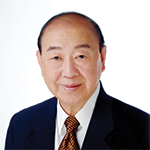The Inpatient Ward
After observing the outpatient clinic, I was eager to see the inpatient care system, which differed significantly from what I was familiar with in the United States.
In the U.S., non-surgical patients are typically admitted to a general medicine ward. However, in China, each internal medicine subspecialty runs its own ward. In the emergency department, patients are evaluated by specialists before being admitted to the most appropriate specialty ward.
At SRRSH, the rheumatology department has its own dedicated ward, with about 30 beds. For infusions, patients are typically admitted for an overnight stay, during which they have labs drawn and are seen by the doctor. This is in a contrast to the U.S., where patients generally go to an outpatient infusion center.

The Grand Canal, the earliest parts of which were completed in the 5th century BCE, with a modern skyscraper in the background. (Click to enlarge.)
I witnessed a memorable case involving a young man with a fever, rash, sore throat and inflammation in the myocardium and pericardium on a PET-CT scan. The team called for a multidisciplinary conference. Doctors from cardiology, infectious disease and radiology all examined the patient together. Next, we had a productive group discussion. Later, I learned the patient was diagnosed with a post-streptococcal allergic reaction.
The inpatient rooms were clean and utilitarian. On this inpatient floor, three patients typically share a room. Each room has ample space to store personal belongings. A major contrast with U.S. hospitals was the lack of IV pumps; instead, IV medications were hung from hooks dangling from the ceiling. The medications were manually titrated using an IV roller clamp, which made me wonder if the precise flow rates we demand in the U.S. may not always be necessary.
There were no televisions in the hospital rooms. The rooms served their primary function as spaces for medical workups and treatment, rather than the hotel-like environment sometimes touted by U.S. hospitals. By contrast, I’ve seen single-patient rooms in U.S. hospitals with massive flat-screen TVs.
At SRRSH, I frequently saw family members at patients’ bedsides, often bringing fresh fruit as a snack for their loved ones. The emphasis on the family unit reflects the Confucian values deeply rooted in Chinese culture, in contrast to the emphasis on individualism in Western culture.




